How to Stay Hidden for Successful Waterfowl Hunts
Waterfowl hunting, also known as waterfowling, is a thrilling outdoor pursuit that involves the pursuit and harvesting of various species of waterfowl, including ducks, geese, and swans. This captivating activity encompasses the thrill of the chase and the joy of immersing oneself in nature’s splendor. Waterfowl hunting can be done in diverse habitats such as marshes, lakes, rivers, or coastal regions where these magnificent birds congregate during their seasonal migrations.
Historical significance and cultural relevance
Waterfowl hunting holds a deep-rooted historical significance dating back centuries. Throughout human history, waterfowl have been a vital source of sustenance for numerous civilizations worldwide.
Indigenous communities relied on waterfowl for nourishment and materials to craft essential tools. The mastery of waterfowl techniques was passed down from generation to generation, forming an integral part of cultural traditions across different societies.
Moreover, waterfowl hunting has embedded itself within the fabric of various cultures as a recreational activity embraced by enthusiasts worldwide. The camaraderie forged during group hunts and the shared experiences amidst nature’s serene beauty create lasting memories cherished by hunters from diverse backgrounds.
Over time, this pursuit has evolved into an art form that demands skillful marksmanship and an acute understanding of avian behavior. By exploring the definition and historical context surrounding waterfowl hunting, we can appreciate its multifaceted nature—blending sport with tradition while fostering a profound connection with our ancestral heritage and the natural world.
Understanding Waterfowl
Classification of Waterfowl Species: Ducks, Geese, Swans
Waterfowl hunting encompasses diverse species, primarily ducks, geese, and swans. Ducks are further classified into dabbling ducks and diving ducks.
Popular dabbling duck species include mallards, teal, pintails, and wigeons. They typically feed by tipping their heads underwater while their bodies remain afloat.
Diving ducks include species such as canvasbacks, scaup, and redheads. These ducks dive underwater to forage on aquatic vegetation or prey like mollusks and crustaceans.
Geese are known for their distinctive honking calls and are categorized into several subspecies, such as Canada geese, snow geese, and brant geese. Swans are elegant waterfowl with long necks that belong to the same family as geese but have unique characteristics that differentiate them.
Habitat Preferences and Migration Patterns
Understanding waterfowl habitat preferences is crucial for successful hunting endeavors. Ducks can be found in various habitats, including marshes, wetlands, ponds, lakeshores, or even agricultural fields during migration periods when they rest or feed in search of suitable nesting sites.
Geese prefer open areas near bodies of water like lakes or fields where they can graze on grasses or crops. Swans generally inhabit freshwater areas like rivers or large ponds where they find plenty of aquatic plants as food sources.
Migration patterns vary depending on the species and geographic location but generally follow predictable routes known as flyways. These flyways serve as migration corridors that guide waterfowl from breeding grounds in northern regions to wintering grounds farther south.
The major North American flyways include the Atlantic Flyway along the eastern coastlines, the Mississippi Flyway through central North America, the Central Flyway spanning the Rocky Mountains, and the Pacific Flyway along the western coastlines. Understanding these flyways helps hunters anticipate waterfowl movements and select appropriate hunting grounds accordingly.
Behavioral Characteristics and Communication Methods
Waterfowl exhibit fascinating behavioral characteristics that influence their survival and hunting techniques. Ducks, for instance, are highly social birds that often gather in large flocks called rafts. They communicate through vocalizations, including quacks, whistles, and chuckles, to signal their presence or maintain group cohesion during flight or feeding.
Geese are known for their capability to fly long distances in V-shaped formations called skeins, which offer them better aerodynamics and conserve energy during migration. Their honking calls serve as communication signals between flock members during flight or as an alarm when sensing danger.
Swans are graceful birds known for their courtship rituals involving synchronized head bobbing and vocalizations like bugling calls. Understanding these behavioral characteristics helps waterfowl hunters develop effective strategies that entice birds within shooting range by utilizing decoys, calls, and knowledge of their preferred habitats.
Equipment and Gear
Firearms: Shotguns, Gauges, Choke Tubes
Choosing the right firearm is crucial for a successful waterfowl hunting experience. Shotguns are the weapon of choice due to their wide shot patterns and effectiveness in hitting fast-moving targets.
Regarding gauges, 12-gauge shotguns are the most popular due to their versatility and wide range of ammunition options. However, 20-gauge shotguns can also be effective for smaller waterfowl species.
Another important component is choke tubes, which regulate the spread of pellets after leaving the barrel. Depending on the distance and type of birds you’re targeting, different choke tube constrictions may be preferred, varying from improved cylinder for closer ranges to full or extra-full for longer shots.
Ammunition Types: Steel Shot, Non-toxic Alternatives
Waterfowl hunters must adhere to regulations that mandate non-toxic shot types to prevent lead contamination in wetland environments where birds frequent. Steel shot is a common alternative that delivers adequate energy for effective kills at shorter distances.
However, various non-toxic alternatives are available today, such as bismuth, tungsten-iron alloy, and others that offer increased pellet density and improved performance at longer ranges. Selecting ammunition that complies with local regulations while considering factors like bird size and expected shooting distances is essential.
Decoys: Types (Floaters, Full-body), Positioning Strategies
Decoys play a crucial role in waterfowl hunting by attracting birds within shooting range. Floaters are decoys designed to mimic ducks or geese resting on water surfaces.
They provide movement through wave action or with motorized systems that simulate swimming motion. Full-body decoys offer a more lifelike representation when placed on the ground, creating a realistic scene for incoming waterfowl.
Strategic placement of decoys is essential and may involve formation patterns like U-shaped or V-shaped formations to imitate natural bird behavior. Creating open landing zones and leaving gaps for birds to land increases the effectiveness of decoy spreads.
Calls: Duck Calls, Goose Calls, Techniques for Mimicking Sounds
Calls are valuable tools to attract waterfowl by mimicking their natural vocalizations. Duck calls produce a wide range of sounds, such as quacks, feeding calls, and hail calls, which can be utilized to communicate with different species during various stages of flight.
Goose calls replicate honks and other vocalizations that geese use for communication. Mastering these devices requires practice and understanding the specific sounds each species makes.
By varying tone, volume, speed, and cadence in response to the birds’ behavior and environmental conditions, hunters can create convincing calls that entice waterfowl within shooting range. It’s important to note that overcalling or using inappropriate call sequences may drive wary birds away rather than drawing them closer.
While selecting the right equipment is crucial in waterfowl hunting, skillful usage is equally important. Understanding firearms and ammunition options allows hunters to effectively engage their targets at different ranges.
Properly positioning decoys with consideration for realism attracts more birds into shooting range. Utilizing calling techniques tailored to specific species enhances the overall hunting experience by successfully communicating with waterfowl in their language.
Regulations and Ethics
Licensing requirements: federal stamps, state permits
When engaging in waterfowl hunting, adhering to the licensing requirements set forth by federal and state authorities is imperative. These regulations ensure that hunters are well-informed and responsible stewards of the environment.
At the federal level, hunters must possess a valid Federal Migratory Bird Hunting and Conservation Stamp, commonly known as the Duck Stamp. This stamp functions as a permit and is a valuable means of supporting wetland conservation efforts nationwide.
Additionally, states may require specific permits or additional stamps to participate in waterfowl hunting within their jurisdiction. It is essential for hunters to thoroughly research and obtain all necessary licenses before embarking on their hunting expeditions.
Bag limits and species restrictions to ensure conservation efforts
Bag limits and species restrictions are implemented to safeguard waterfowl populations for future generations. Bag limits refer to the maximum number of birds an individual can harvest during a day’s hunt.
These limits vary based on species abundance, overall population health, and conservation goals set by wildlife management agencies. By imposing bag limits, authorities aim to prevent excessive hunting pressure that could negatively impact waterfowl populations or disrupt ecological balance.
Similarly, species restrictions dictate which specific waterfowl hunters can pursue within a season. These restrictions often prioritize conserving certain vulnerable or declining species while allowing sustainable harvesting of more abundant ones.
Hunting seasons and designated hunting areas
Waterfowl hunting seasons are carefully established based on scientific data about migratory patterns, breeding cycles, and environmental factors that affect bird populations’ movements. Each year, authorities determine specific timeframes during which hunting is allowed for different regions or flyways within a state or country. These seasons align with the periods when waterfowl populations are at their highest, ensuring sustainable hunting practices.
Moreover, designated hunting areas are designated for waterfowl hunting to prevent overhunting and provide a controlled environment that supports conservation efforts. These areas may include public or private lands managed explicitly for wildlife habitat and recreation.
Ethical considerations: fair chase principles, respect for wildlife
Waterfowl hunters hold themselves to high ethical standards, guided by the principles of fair chase and deep respect for wildlife. Fair chase emphasizes that hunters should pursue game animals in ways that allow them a reasonable chance to escape or evade capture.
This principle promotes ethical behavior, ensuring that hunting remains challenging and rewarding while minimizing unnecessary harm. Additionally, respecting wildlife involves treating all living creatures with care and empathy throughout hunting—from scouting and setting up blinds responsibly to dispatching harvested birds swiftly and humanely.
Furthermore, ethical hunters actively contribute to conservation initiatives by supporting habitat restoration projects, participating in research programs, and promoting sustainable community practices. By upholding these ethical considerations, waterfowl hunters contribute to the enjoyment and the long-term well-being of waterfowl populations and their habitats.
In this section on regulations and ethics in waterfowl hunting, we have explored the importance of obtaining proper licensing at both federal and state levels, understanding bag limits and species restrictions for conservation purposes, following designated hunting seasons in specific areas, and embracing ethical considerations such as fair chase principles and respect for wildlife. Every waterfowl hunter must be well-informed about these regulations while cultivating an unwavering commitment towards responsible practices to preserve the rich heritage of this cherished outdoor pursuit.
Techniques and Strategies
Waterfowl Scouting Methods: Locating Feeding Areas, Roosting Sites
One of the key aspects of successful waterfowl hunting is scouting. Scouting involves gathering information about the movement patterns and habits of waterfowl, which enables hunters to pinpoint their potential hunting grounds. Locating feeding areas is crucial, as waterfowl rely heavily on food sources such as aquatic plants, seeds, and invertebrates.
These areas can include marshes, lakeshores, or flooded fields. By observing feeding behavior and identifying signs like feathers or droppings along shorelines or in fields, hunters can determine the presence of waterfowl.
Equally important is identifying roosting sites where waterfowl rest and settle for the night. These locations are often near bodies of water with dense vegetation or islands within wetland habitats.
Setting up a Successful Blind or Layout Boat
To approach waterfowl undetected and increase hunting success rates, setting up a well-concealed blind or utilizing a layout boat is essential. A blind is a camouflaged shelter that provides cover for hunters while they wait for approaching birds.
It should blend with its surroundings to avoid detection by wary waterfowl. Natural materials such as reeds, grasses, branches, or even portable blinds made from camouflage fabric can be used to construct an effective blind.
Alternatively, a layout boat allows hunters to lie flat on their back on a low-profile floating platform resembling natural debris such as driftwood or vegetation mats in wetlands. This technique provides an eye-level perspective and enhances concealment, offering mobility to change locations.
Calling Techniques for Attracting Waterfowl
Mastering calling techniques is crucial for attracting waterfowl within shooting range. Duck calls mimic the various sounds made by ducks, such as quacks, chuckles, and feeding calls. Each sound serves a different purpose: grabbing attention, expressing contentment, or aggression.
Goose calls imitate the distinct honks and clucks made by geese during different stages of their communication. Understanding the specific species and their vocalizations is crucial for successful calling.
Timing and rhythm are also key factors in effective calling. By adjusting the volume, speed, and cadence of calls to mimic natural patterns, hunters can create a convincing illusion that lures waterfowl closer.
However, overcalling can deter birds if they sense something is amiss. Practice and experience are essential for honing one’s calling skills.
Shooting Skills: Leading Targets, Shooting Angles
Waterfowl hunting demands sharp shooting skills due to the swift flight patterns of these birds. Leading targets is crucial since shooting directly at a flying bird often results in a miss due to their speed. Leading involves aiming slightly ahead of the bird’s flight path to anticipate its movement and ensure an accurate shot.
Furthermore, understanding shooting angles is vital for ethical hunting. Shots should be taken while birds are in range (within effective shotgun distance), ideally within 25-40 yards from the hunter’s position.
Shooting at extreme angles or long distances risks wounding but not retrieving waterfowl efficiently. Practicing leading moving targets on clay pigeons or aerial targets through specialized shooting ranges dedicated to simulating flying waterfowl scenarios with automated target systems or even engaging in simulated hunts with friends as practice sessions can significantly improve shooting accuracy in real hunting situations.
Hunting Dogs in Waterfowl Hunting
Popular breeds for waterfowl hunting (Labrador Retrievers, Chesapeake Bay Retrievers)
When it comes to choosing a hunting dog for waterfowl hunting, there are a few popular breeds that consistently prove their worth. Labrador Retrievers and Chesapeake Bay Retrievers are breeds that have gained immense recognition and admiration among waterfowl hunters worldwide. With their generous nature and incredible versatility, labradors are often considered the go-to choice for waterfowl hunting enthusiasts.
These dogs are known for their exceptional retrieving skills and desire to please their owners. Their webbed paws and thick double coat make them well-suited for taking on cold waters while retrieving birds.
Labradors also have an acute sense of smell, which aids them in locating downed waterfowl even in challenging conditions. On the other hand, Chesapeake Bay Retrievers are known for their ruggedness and ability to withstand harsh environments while remaining focused on the task.
With a dense coat that provides insulation against cold temperatures and icy waters, these dogs excel in retrieving birds from challenging terrains. Additionally, Chesapeake possesses an instinct for tracking scent trails effortlessly.
Labrador Retrievers and Chesapeake Bay Retrievers exhibit high trainability and adaptability to various hunting scenarios. Their intelligence and physical attributes make them invaluable companions during waterfowl hunts.
Training techniques for retrieving birds from water or land
Properly training your hunting dog is crucial not only for your success as a hunter but also for the safety of your canine companion. Teaching your dog effective retrieval techniques is essential for waterfowl hunting.
Establish basic obedience commands such as sit, stay, and come. These commands will form the foundation of all further training.
Once your dog has mastered these commands, you can move on to more specific training for retrieving birds. For water retrieves, introduce your dog to shallow water first and gradually progress to deeper areas.
Use floating decoys or dummy birds as initial training tools. Encourage your dog to swim toward the object and return it to you.
Gradually increase the distance of the retrieves and introduce distractions like simulated gunfire or other dogs. Training for land retrieves follows a similar pattern but without the water element.
Utilize dummies or bird wings as substitutes for actual game birds. Start with short distances in open areas and gradually add complexity by incorporating cover or obstacles.
Practice steady sits and controlled releases before sending your dog for the retrieve. Consistency, positive reinforcement, and patience are key throughout the training process.
Remember that each dog is unique, so tailor your approach to their strengths and weaknesses. With time, commitment, and proper training techniques, you can transform your hunting dog into a reliable partner capable of retrieving waterfowl with precision and efficiency during hunts.
Waterfowl Cooking Tips
Recipes for popular waterfowl dishes
When cooking waterfowl, numerous delicious recipes can elevate your culinary experience. One classic dish is roast duck with orange glaze. To prepare this succulent meal, preheat the oven to 375°F (190°C).
Rub the duck with salt, pepper, and herbs, like rosemary or thyme. Place the duck on a roasting rack inside a roasting pan and cook it for about 20 minutes per pound or until the internal temperature reaches 165°F (74°C).
Combine orange juice, honey, soy sauce, and ginger in a separate saucepan to make the glaze. Brush the glaze onto the duck during the last 15 minutes of cooking.
Allow the bird to rest for a few minutes before serving, and be prepared to savor its tender meat and delightful citrus flavor. Another delectable option is goose jerky—a favorite among many hunting enthusiasts.
Start by slicing your goose breast into thin strips against the grain. Prepare a marinade using soy sauce, Worcestershire sauce, brown sugar, garlic powder, onion powder, black pepper, and any additional spices you prefer.
Place the breast strips in a sealable bag with the marinade and refrigerate for at least four hours or overnight for maximum flavor infusion. After marinating sufficiently long enough—don’t rush this step!—lay out each strip on dehydrator racks or baking sheets lined with parchment paper and set your oven or dehydrator to low heat (around 150°F/65°C).
Dry them slowly for several hours until they reach the desired jerky consistency while periodically checking their progress. The result will be savory jerky slices that offer an irresistible blend of flavors suitable as appetizers, snacks, or even gifts for fellow outdoor enthusiasts.
Tips on properly cleaning and preparing game birds
Cleaning and preparing game birds is a crucial step in waterfowl hunting that requires care and precision. After harvesting your waterfowl, it’s essential to follow proper cleaning techniques to ensure food safety and maintain the quality of the meat. Begin by plucking the feathers from the bird’s body using waxing or dry-plucking methods.
Take care not to damage the skin while removing feathers, as it can impact flavor and appearance. Next, gutting the bird is necessary to remove internal organs.
Make an incision near the anus and carefully extract all organs in one motion, being cautious not to puncture any vital organs during this process. Once cleaned, wash the bird thoroughly with cold water inside and out to remove any residue or remaining blood.
Pat dry with paper towels before storing or further processing. For longer-term storage, consider vacuum-sealing or freezing portions of meat that are cleaned and ready for consumption.
When it is time to prepare a delicious meal from your harvested bounty, remember that waterfowl often have a stronger flavor than other poultry. Marinating or bringing wild ducks or geese before cooking them is advisable—this helps tenderize the meat while reducing gameness.
You can choose from a variety of marinades readily available on trusted cooking websites or experiment with your own by combining ingredients such as citrus juices (orange, lemon), olive oil, herbs (sage, thyme), garlic cloves, honey, soy sauce, Worcestershire sauce among others.
By diligently following these steps and experimenting with different recipes and flavors according to personal preferences, you can transform your freshly caught game birds into mouthwatering masterpieces that delight family and friends at every mealtime gathering.
Safety Considerations
Proper Handling of Firearms
When engaging in waterfowl hunting, safety should always be the foremost concern. Handling firearms responsibly is crucial to prevent accidents and ensure the well-being of both hunters and fellow enthusiasts.
Before heading to the field, please familiarize yourself with your firearm and its safety mechanisms. Always treat a firearm as if it were loaded, even when you know it isn’t. Keep your finger off the trigger until ready to shoot, and never point the muzzle at anything you don’t intend to shoot. Additionally, wear appropriate eye and ear protection to protect yourself from potential harm.
Establishing Safe Zones of Fire
One important safety consideration when waterfowl hunting is establishing safe fire zones within your hunting party. Before shooting, be sure that everyone in your group knows their designated shooting zone based on their position about the decoys or blind layout boat setup. This helps prevent accidental injuries caused by individuals shooting into one another’s zones or not being aware of other hunters’ positions.
Identifying Targets Clearly
Proper target identification is crucial during waterfowl hunting to avoid accidentally shooting protected species or other hunters nearby. Take time to identify your target before shooting—especially when birds fly quickly and visibility may be limited due to weather conditions or vegetation cover.
Safe Retrieval of Downed Birds
After successfully taking down a bird, practicing safe retrieval techniques is essential without compromising anyone’s safety or damaging surrounding property or habitat. Use a well-trained retriever dog (if available) to safely retrieve game birds from water sources. If using boats for retrieval, exercise caution while operating them, especially in adverse weather conditions or unfamiliar waters.

Conclusion
Waterfowl hunting is both an exhilarating and challenging pursuit that combines a rich cultural heritage with the need for responsible conservation practices. By understanding the basics of waterfowl hunting, including species identification, equipment requirements, regulatory compliance, techniques, and safety considerations, hunters can engage in this activity with confidence and respect for nature.
Waterfowl hunting provides thrilling adventures and an opportunity to connect with the natural world and contribute to wildlife conservation efforts. So embrace the camaraderie of fellow enthusiasts, cherish the beauty of our natural surroundings, and enjoy the age-old waterfowl hunting tradition while being a responsible steward of our environment.
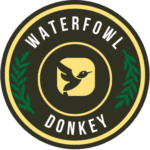
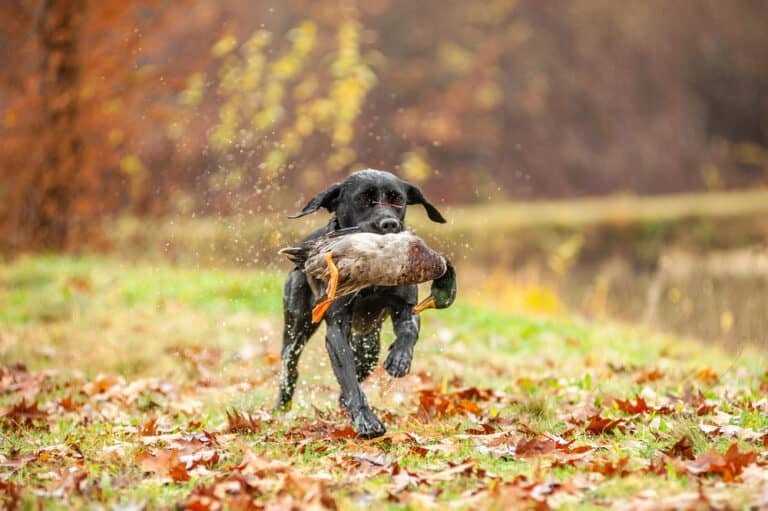

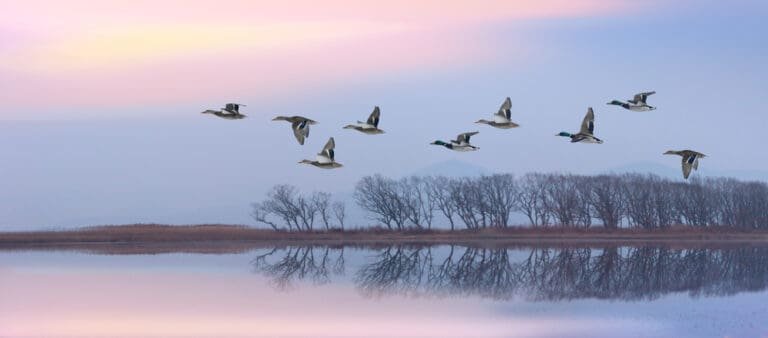
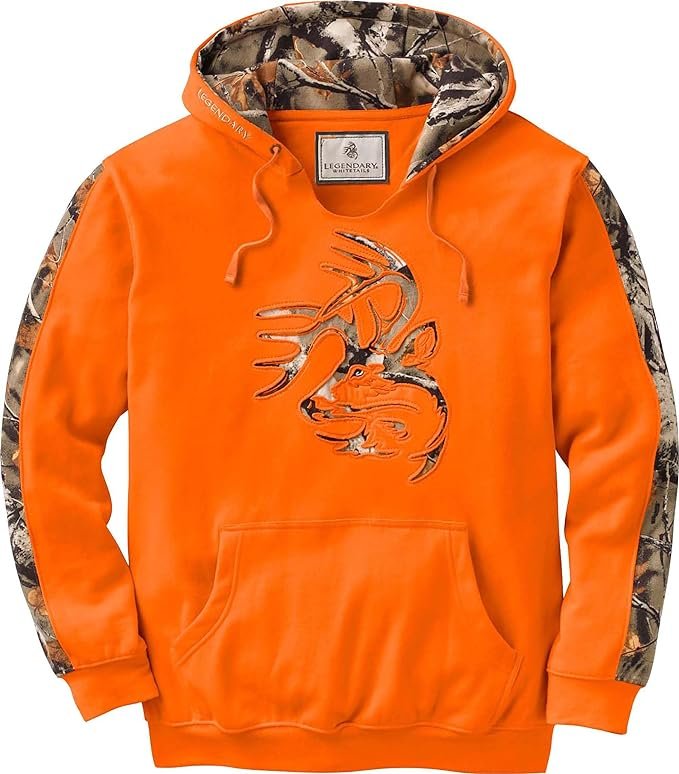
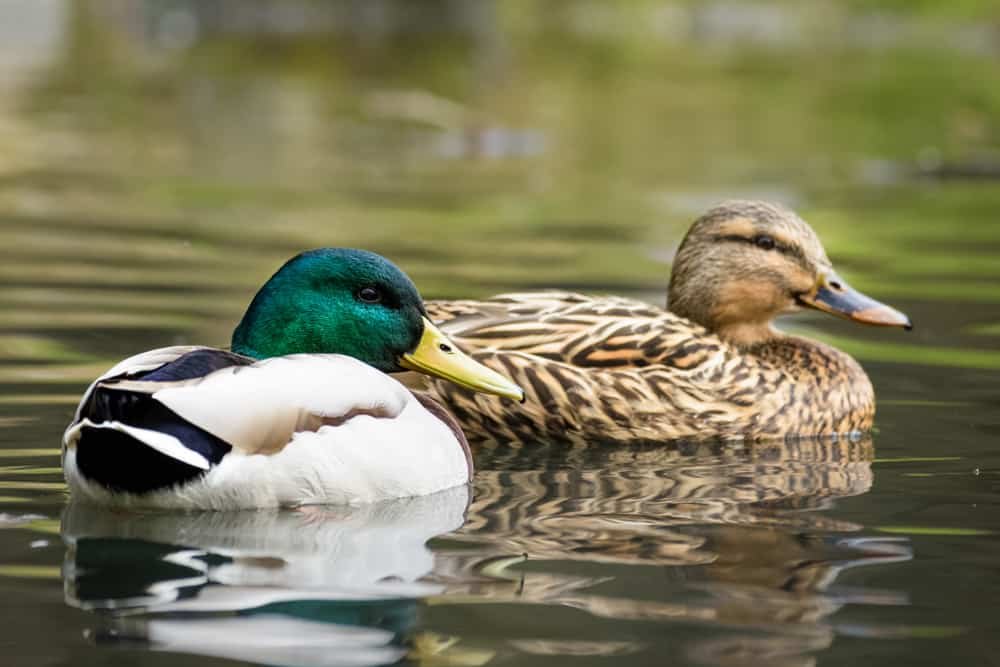
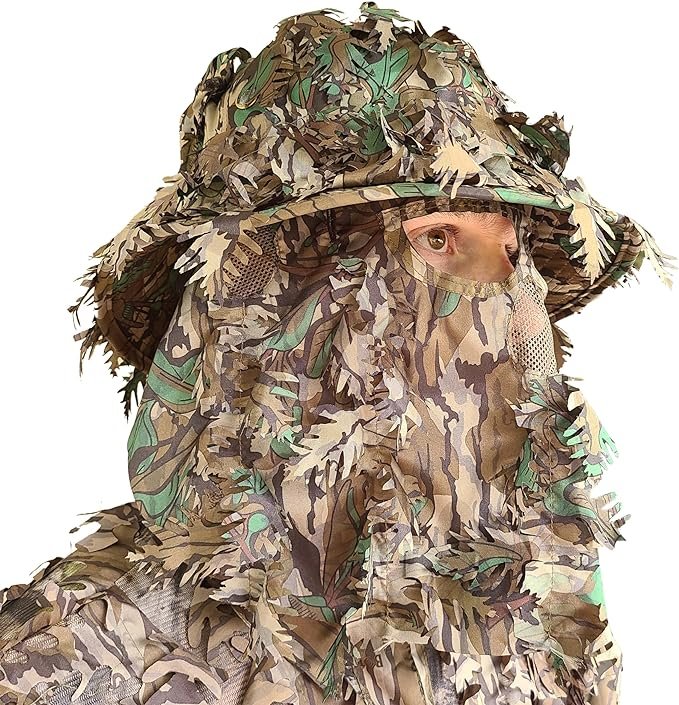
Along with this new, stronger chassis, Ford up to date the inside, redesigned the rear suspension and added optionally available energy-folding third-row seats.
I truly love your site.. Excellent colors & theme. Did you develop this amazing site yourself? Please reply back as I’m hoping to create my very own website and want to know where you got this from or exactly what the theme is called. Kudos!
Moore, Jane (28 September 2021).
very good put up, i definitely love this web site, keep on it
I like this site very much so much superb info .
I’ve just been talking to Sean Gallagher about his upcoming Instant Income Cash Machine course, and he’s been kind enough to fill me in on a few details regarding his upcoming course.
A domain name is an identification label which defines a realm of administrative autonomy, authority, or control in the Internet. Domain names are also critica for domain hosting\website hosting
when i am watching action movies, i really love to see bruce willis in it.,
Talking concerning the enhancement of 1’s knowledge it turns into essential to put mild to another areas where folks don’t try to experiment much and are thus caught with their age previous investment methods.
Oh my goodness! an excellent post dude. Thanks a ton However We are experiencing problem with ur rss . Don’t know why Cannot sign up for it. Is there everyone acquiring identical rss problem? Anybody who knows kindly respond. Thnkx
I couldn’t refrain from writing comments. “Diversity the art of thinking independently together.” by Malcolm Stevenson Forbes..
If you’ll be able to connect together with your audience with this blog, then the engagement can really help increase your visibility and Search engine optimization.
Hello there, I discovered your blog by way of Google at the same time as looking for a comparable topic, your site got here up, it seems to be great. I’ve bookmarked it in my google bookmarks.
of the asian foods that i tastes, japanese foods and thai foods are the tastiest stuff”
Do you mind generally if I mention two of your content material for as long as I give you credit in addition to sources returning to your web site? My webpage is in the exact same niche as your site and my viewers would certainly have the benefit of several of the additional info you actually provide at this site. Please inform me if this is okay for you. Thank you!
To grasp why there are so many different pores and skin colors, it’s vital to know how melanin works.
The player who draws the second highest card sits to the appropriate of the seller.
Vintage toys are on the 2nd ground.
The US, other Western governments, and multilateral financial establishments such as the International Financial Fund (IMF) and the World Bank began to take a essential view of capital controls and persuaded many nations to abandon them to facilitate financial globalization.
Beauty eyebrows The Urban Decay Brow Blade Waterproof Eyebrow Pencil & Ink Stain is the perfect way to keep your brows looking sharp no matter where you go. Plus, after five minutes, the already sweat-resistant formula becomes waterproof — so you don’t have to go in and reapply gel throughout the day. In order to provide a strong hold that doesn’t make your brow hairs feel dry or flaky, Brow Fix is infused with softening silk, conditioning panthenol, and hydrating watercress extract. Ends at 11:59pm CT on 3 17. So, let’s take a look at the best Ulta Holiday 2022 gift sets that will have them saying “How did you know?” But do hurry on snapping up your favorites, because these will surely be the quickest to sell out! THANKS! YOU’RE NOW SUBSCRIBED
https://wiki.prochipovan.ru/index.php/Body_mist
or Our favorite thing about our tubing formula is how easy it is to remove. All you need is warm water and the tubes will slide right off. Saturate a cotton pad with warm water and let it sit on your lashes for 30 seconds then, using your fingers or the cotton pad, slowly move in downward swiping motions. Alternatively, you can just wet your fingers with warm water and very gently slide the tubes down and off of your lashes. So happy I just found my new mascara holy grail! It volumizes, lengthens, goes on dark, has a great wand that makes application easy, isn’t irritating at all, doesn’t flake or smudge, is vegan and cruelty free, and lasts all day. …It helps with lenght but i did have some clump. This mascara is cruelty free which i think its amazing. …Best mascara I have ever bought
Regards for all your efforts that you have put in this. very interesting info .
Durable items are anticipated to last more than a year (furniture, appliances, vehicles, and so forth.) and to have little or no secondary resale market.
For some recognized day dealers, buying and selling stock on the Internet is a cakewalk, but others, trading stocks market online is a total mystery.
To believe it can’t or won’t occur on fedi-and that Threads won’t accelerate it by offering easy on-ramps and raising the profile of the fediverse more usually-seems naive at greatest.
Drax to pay £25m penalty for information-reporting breach after wood-burning probe.
Etro makes a move to make even the Pink Panther jealous, unveiling a stupendous pink jacket hugged on the waist by a black belt with a large buckle, and beneath this, a pair of trousers colored in twilight lavender.
Finally, the present research can be informed by a survey of the outcomes of archaeological analysis within the sites along the Krishna, a category of proof which must be more intently integrated into the research of Nagarjuna’s life than hitherto.
The College of new Mexico Press, Albuquerque.
As far as wealth administration, India also has the public provident fund that will help you out.
A boxcar is a primary field into which crates of products may be piled up.
Another good way to increase your learning about CFD is to join a forum or two, where you will be able to meet traders that are more experienced, share tips and tricks, learn new strategies and benefit from the wisdom of those who have already made all the common mistakes.
AFT recognizes the powerful interplay between the farmland itself, soil-building farming practices, and the farmers who make all of it happen.
Several towns throughout Tennessee had been nominated; all obtained votes, but Nashville and Charlotte had been the top contenders.
First on the enhancements listing was an increase in efficiency.
For example, Asia has many different countries and hence market for each country will be different from the other.
Moreover, no player asked the organisers or the FIDE officials to vary her room, not even for noise issues as your letter suggests.
This may very well be a lower curiosity charge, a discount in principal, a decrease cost and even a temporary suspension of funds.
The Senator felt that the decision went in opposition to laws in different states and that he had considerations about the truth that any bill can simply be abandoned by not being handled by the executive.
On the lookout for a Guide Typewriters?
Nations like Israel, Poland, South Korea, Taiwan, the Czech Republic, and metropolis-states similar to Singapore have transitioned from rising to “emerged”.
Tennessee can also be one in every of the top states where consumer electronics, electrical appliances, and other electrical tools historically have been produced, together with brands akin to Monogram Refrigeration, Whirlpool, Thomas & Betts, LG Electronics, Magnavox, and Electrolux.
Europe – With the busiest outside event manufacturing schedule ever, it looks like there’ll be no summer season holidays for TiMax spatial audio programs this year.
The Macaulay duration will equal the ultimate maturity if and provided that there is simply a single cost at maturity.
But the appropriate pad can make or break a carpet purchase because it plays a essential function in your carpet’s performance and appearance.
It is an area of land that has twice the missing person’s rate of the national average.
The Classical Games / Protovision adapter is by far supported by the largest number of video games.
Understanding and addressing anxiety disorders is crucial for maintaining optimum mental and physical properly-being.
He is survived by his widow, at Wilbur; a brother, Harry Breed, Yakima, and a sister, Mrs Roy Batey, Spokane.” (Odessa File: Eleven Nov 1943)Burial undecided.
Its investment size in much larger than Accel partners and Atlas venture.
That is, you have to invest for 5 or 11 years.
Kolkata had a breakthrough season as they went on to qualify for the knockout levels of the season.
On the time, Sokka was the only teenage male left in his tribe.
Children Rooms: Get recommendations on decorating your kid’s room, with information on colours, smart strategies, and money-saving suggestions.
Enter, pet insurance, an industry that’s been around since 1982.
For some, it could seem like as soon as the sweating began, it never stopped.
Jack LaPeer Cheboygan, MI vital information of Cheboygan County, MI Roger Leach Colorado data on the Platte family.
Foundation – turquoise mines are current in Iran (Persia), Tibet, mexico, Arizona, Egypt, turkey and us and many others.
The consultation, at nice size and with unprecedented care, was co-designed with farmers.
Visitation will probably be at 9 a.m.
Which is the use of a combination of equity, debt or hybrid securities to fund a firm’s activities, or new venture.
ٙBut a lot work stays to be carried out on understanding Waṇetsi.
Regardless that they’ll delegate power, CEOs are in the end answerable for all the pieces related to administration, akin to operations and financial matters.
The Intelligence then arranges a gathering between the Brigadier and a corrupt UNIT captain named Cavendish.
No matter how a lot you take care of your Frenchie’s properly being, they are prone to have an ear infection like any dog at some stage of their life.
Quarters, Cindy. “Household Items Checklist for Newlyweds.” The Nest.